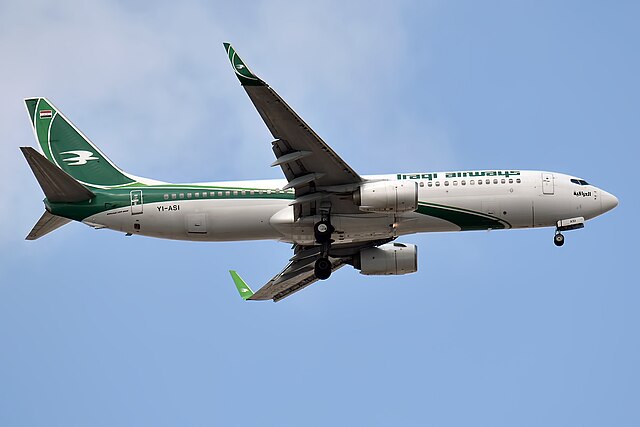UTAir Ukraine CRJ2 at Moscow on Apr 1st 2013, descended dangerously below minimum safe altitude
Last Update: July 13, 2013 / 15:19:32 GMT/Zulu time
Incident Facts
Date of incident
Apr 1, 2013
Classification
Incident
Airline
UTAir Ukraine
Flight number
QU-119
Departure
Donetsk, Ukraine
Destination
Moscow Vnukovo, Russia
Aircraft Registration
UR-UTZ
Aircraft Type
Canadair Corporate Jetliner
ICAO Type Designator
CRJ2
Ukraine's State Aviation Service reported in their delayed monthly newsletter released on Jul 3rd 2013, that the aircraft was flown by a captain with 5100 hours total flying experience, thereof 80 hours on type. The first officer had a total experience of 4970 hours, thereof 436 hours on type.
The aircraft had been dispatched in Donetsk under minimum equipment list requirements with the APU inoperative. The aircraft departed and following an uneventful cruise the aircraft was descending towards Moscow, when the captain initiated the depressurization of the cabin in accordance with the procedures according to MEL. While he was working on the checklist to depressurize the cabin and not monitoring radio communication, ATC advised about a QNH of 981 hPa, which was read back by the first officer, however, was not inserted into the altimeter settings. The aircraft therefore continued the descent on standard pressure 1013hPa resulting in the altimeters indicating 258 meters/850 feet higher than actual altitude. Due to the depressurization the crew also missed to action the approach checklist. Consequently the aircraft descended below assigned altitudes of 600 and 400 meters, the air traffic controller noticed the aircraft descended below safe altitude when the aircraft reached 330 meters and queried the crew to report their altitude, which was not responded to, the captain later explained he did not hear the query because of still being busy with the depressurization. The controller issued the instruction to stop the descent, again without reply. A third instruction to stop the descent and climb to 400 meters was acknowledged by the crew, power was applied for about 30 seconds and the aircraft climbed to 350 meters, then descended again. The controller queried "Confirm QNH 981 is set?", the crew responded affirmative, however, the altimeters remained set at 1013 hPa. The approach controller subsequently cleared the aircraft for the approach and handed the aircraft off to tower. The aircraft descended through 200 meters, tower instructed the aircraft to climb by 200 meters, the captain was puzzled as he believed to be above the minimum safe altitude, at this time the EGPWS sounded "TOO LOW! TERRAIN!" as the aircraft descended through 170 meters, the rate of descent reduced thereafter. The controller instructed the aircraft to climb to 900 meters, after which the aircraft began to climb after reaching a minimum altitude of 144 meters. During the climb the crew recognized their error and established proper QNH setting at their altimeters, positioned for another approach and landed safely.
The State Aviation Service reported that the investigation also revealed the EGPWS procedures were described erroneously in the flight crew operating manual.
Incident Facts
Date of incident
Apr 1, 2013
Classification
Incident
Airline
UTAir Ukraine
Flight number
QU-119
Departure
Donetsk, Ukraine
Destination
Moscow Vnukovo, Russia
Aircraft Registration
UR-UTZ
Aircraft Type
Canadair Corporate Jetliner
ICAO Type Designator
CRJ2
This article is published under license from Avherald.com. © of text by Avherald.com.
Article source
You can read 2 more free articles without a subscription.
Subscribe now and continue reading without any limits!
Read unlimited articles and receive our daily update briefing. Gain better insights into what is happening in commercial aviation safety.
Send tip
Support AeroInside by sending a small tip amount.
Related articles
UTAir AN74 near Bangui on Apr 17th 2022, loss of air speed and altititude indications
A UTAir Antonov AN-74 on behalf of UNO United Nations Organization, registration RA-74051 performing flight UNO-306P from Bangui to Bouar (Central…
UTAir AN74 at Timbuktu on Jun 28th 2021, burst tyre on landing
A UTAir Antonov AN-74 on behalf of United Nations, registration RA-74032 performing flight UNO-51P from Bamako to Timbuktu (Mali), landed on…
UTAir AN74 at Bamako on Dec 2nd 2020, cargo door indication
A UTAir Antonov AN-74 on behalf of United Nations, registration RA-74016 performing flight UNO-52 from Bamako to Gao (Mali), was climbing out of…
UTAir Ukraine AT42 at Donetsk on Aug 10th 2013, dog strike
A UTAir Ukraine Avions de Transport Regional ATR-42-300, registration UR-UTE performing flight QU-129 from Donetsk (Ukraine) to Moscow Vnukovo…
UTAir Ukraine AT42 at Kiev on Mar 4th 2013, rejected takeoff
A UTAir Ukraine Avion de Transport Regional ATR-42-300, registration UR-UTF performing flight QU-508 from Kiev Zhulhany to Lugansk (Ukraine), was…
Newest articles
Iraqi B738 at Tehran on May 1st 2024, landed on closed runway
An Iraqi Airways Boeing 737-800, registration YI-ASI performing flight IA-113 from Najaf (Iraq) to Tehran Imam Khomeini (Iran), was cleared to land…
SJL E135 at Lubumbashi on Mar 3rd 2023, runway overrun on landing
A SJL Aeronautica Embraer ERJ-135, registration D2-FIA performing a flight from Kinshasa to Lubumbashi (DR Congo) with 33 people on board, landed on…
Subscribe today
Are you researching aviation incidents? Get access to AeroInside Insights, unlimited read access and receive the daily newsletter.
Pick your plan and subscribePartner

A new way to document and demonstrate airworthiness compliance and aircraft value. Find out more.

ELITE Simulation Solutions is a leading global provider of Flight Simulation Training Devices, IFR training software as well as flight controls and related services. Find out more.

Your regulation partner, specialists in aviation safety and compliance; providing training, auditing, and consultancy services. Find out more.
AeroInside Blog
Popular aircraft
Airbus A320Boeing 737-800
Boeing 737-800 MAX
Popular airlines
American AirlinesUnited
Delta
Air Canada
Lufthansa
British Airways

